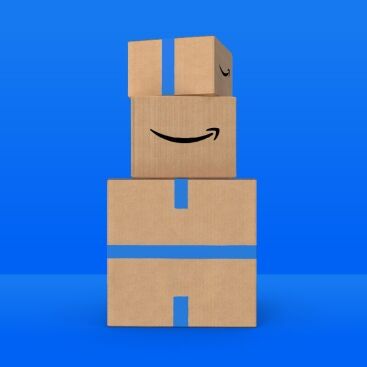Amazon threw us all a curveball
Prime Day 2025 isn’t two days anymore – it’s four full days (July 8-11). That’s the longest Prime event in Amazon’s history, and it changes everything about how you need to think about preparing your peak season fulfillment operations.
Why this matters more than you think
Look, we all know the drill with peak season planning. You forecast, you stock up, you cross your fingers and hope your three- to four-month sales window doesn’t break your business. But here’s the thing – Amazon just made their biggest promotional event twice as long as usual.
This isn’t just “more Prime Days.” It’s a completely different operational challenge. Instead of sprinting for 48 hours, you now need to maintain peak performance for 96 hours straight. Your systems, your people, your processes – they all need to perform at championship level for four consecutive days. Why not set up your tech stack so they perform all day long, every single day?
Learn How to Own Your Peak Season Operations
The new reality: sustained excellence, not just surge capacity
Amazon’s rolling out “Today’s Big Deals” – fresh promotional drops every single day of Prime Week. That means instead of one massive demand spike, you’re looking at multiple surges across four days. Your inventory needs to rebalance constantly.
Do your fulfillment operations adapt in real-time?
Most can’t.
Inbound Logistics published our research, which shows leading companies are achieving 99.9% inventory accuracy while handling record volumes. Read the trends and take action early with the system that handled 1.2% of total US holiday sales in a single peak season.
Changes to Prime 2025
Here’s what Amazon changed for Prime 2025 to make things interesting:
- No fee increases – They’re keeping US referral and FBA fees flat (finally!)
- Reduced costs for large bulky items (about $0.58 per unit savings)
- Waived fees for new products (first 100 units)
- More incentives for adding new selection
That’s the good news. The challenging news? Your fulfillment operations must be flawless because competition will be more challenging than ever.
What Prime Week 2025 will teach you
Think of this as the ultimate stress test for your fulfillment operations. You’ll discover:
- Which processes crack under sustained pressure (versus short bursts)
- Whether your team can maintain quality standards across multiple days
- If your systems actually scale or just pretend to
- The impact of customer loyalty after a bad (or good) experience
- Where your inventory allocation strategies fall short
If you’re thinking about adding new technologies like MHE to boost seasonal productivity, you need to know where you stand first. Test your readiness across 10 key dimensions and get strategies.
Do your systems need an upgrade?
77% of supply chain leaders say peak is getting harder every year. Prime Week 2025 just raised the bar even higher.
Extended promotional events like Prime Week expose the weak links in your fulfillment chain. Think of Prime Week as your preseason game. Find out what breaks and put some safeguards into place before the championship game in Q4.
Use those four days to audit everything:
- Integrations: Did your systems talk to each other properly across all four days? Any delays or oversells when the pressure mounted?
- WMS with Order Management: Are your routing policies actually creating ROI, or are they quietly bleeding money? Did orders go where they should have gone?
- Demand Planning: Is your system learning from this extended event to bulletproof your real peak season plan?
Think about the future
At Deposco, our platform is built for sustained performance. The individual components work great on their own, but when you combine them, you get synergies that make the whole system stronger — whether you’re handling traditional two-day events, Amazon’s new four-day marathon, or all year long.
How Deposco’s retail fulfillment software prepares you:
- Automatically rebalance inventory during promotions and every day
- Handle shifting demand patterns without manual processes
- Increase productivity 2x to 3x without staffing up
- Adapt routing rules in real-time as conditions change
“Our customers aren’t prepping for doomsday scenarios anymore,” says Justin Stone, our VP of Customer Success. “With extended events like Prime Week 2025, it’s about sustained operational excellence, not just surge capacity. Better cost controls, smarter inventory analysis across multiple days, and making every dollar count throughout the entire promotional period.”
The less than 90-day solution
You don’t have to suffer through another peak season with inadequate systems. Implement Deposco’s integrated OMS and WMS in 90 days and maintain excellence across all your operations.
The performance difference between legacy ERP systems and modern supply chain platforms isn’t just noticeable – it’s night and day.
Ready to see if your systems can handle Amazon’s longest-ever Prime event?
Let Deposco help you review your peak season readiness. Our experts can identify critical improvements you can make this year, not next year, specifically for sustained performance capabilities that seasonal and everyday volume demand.
